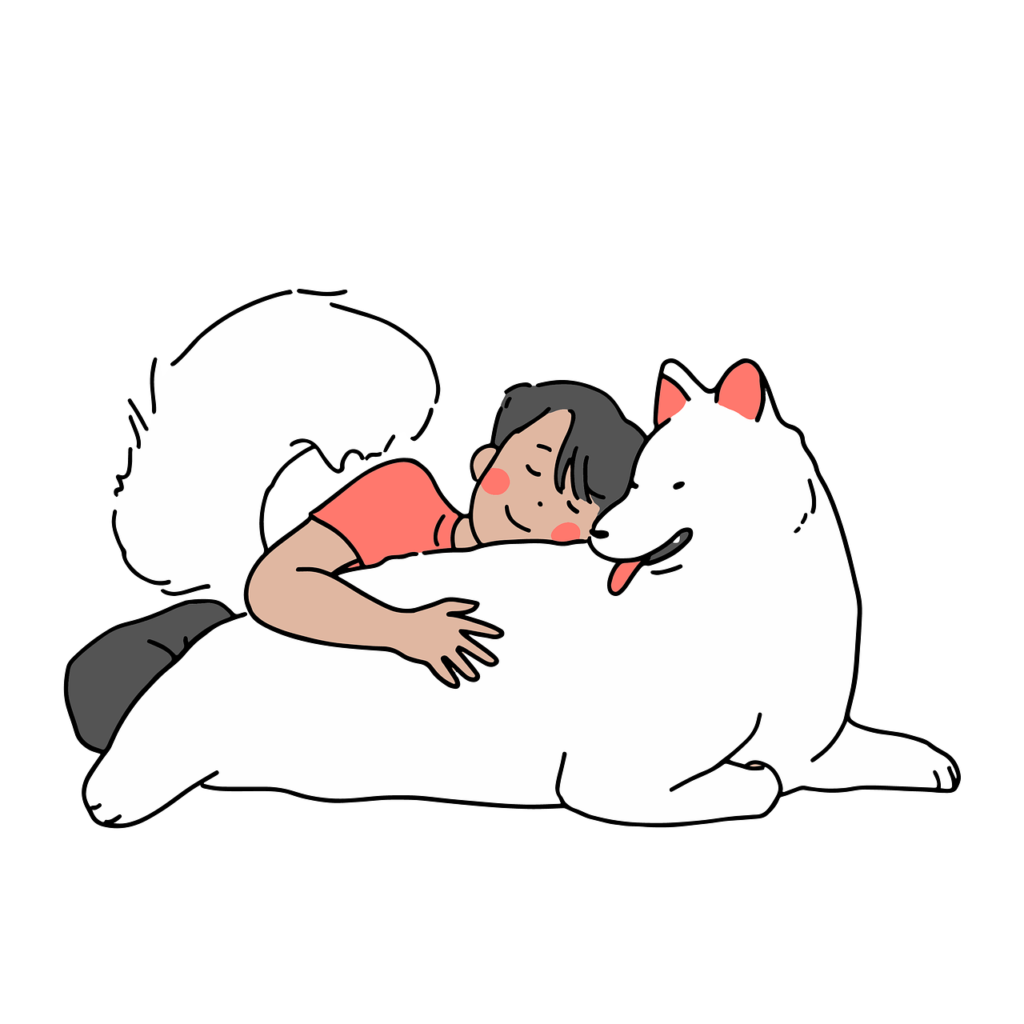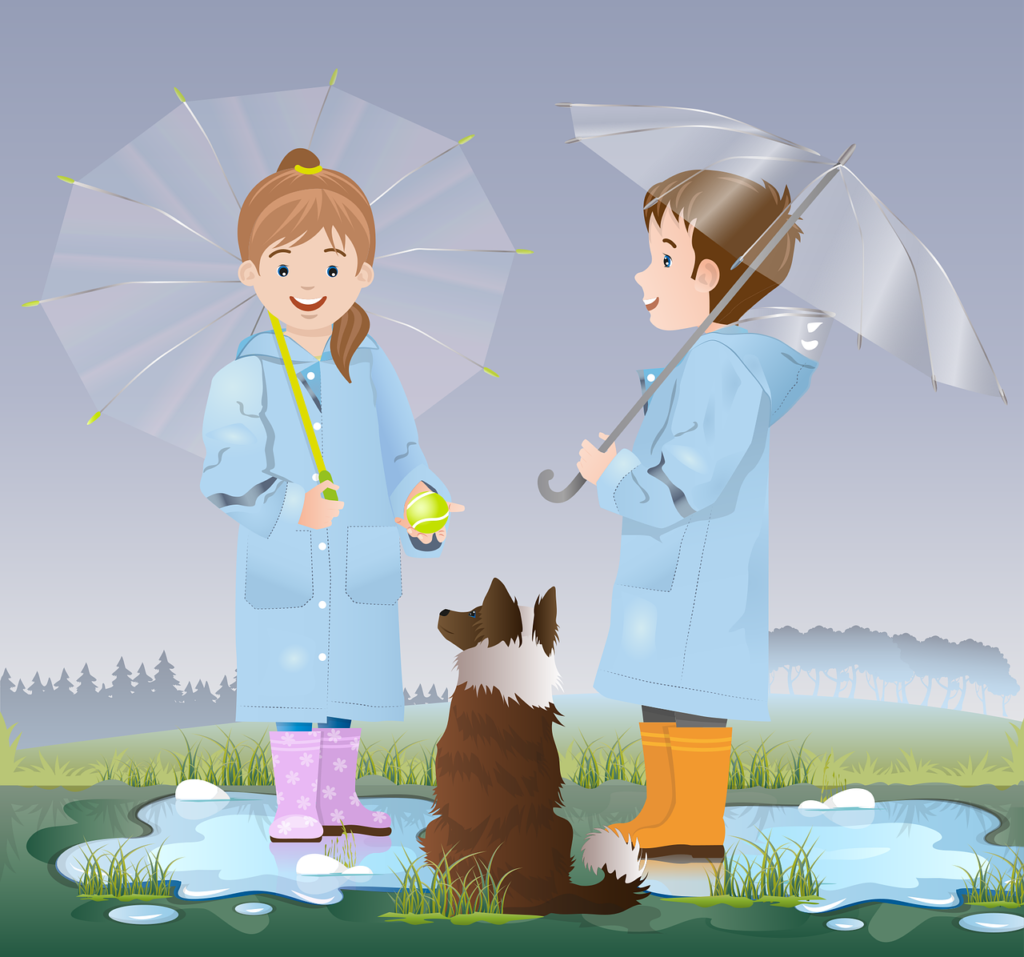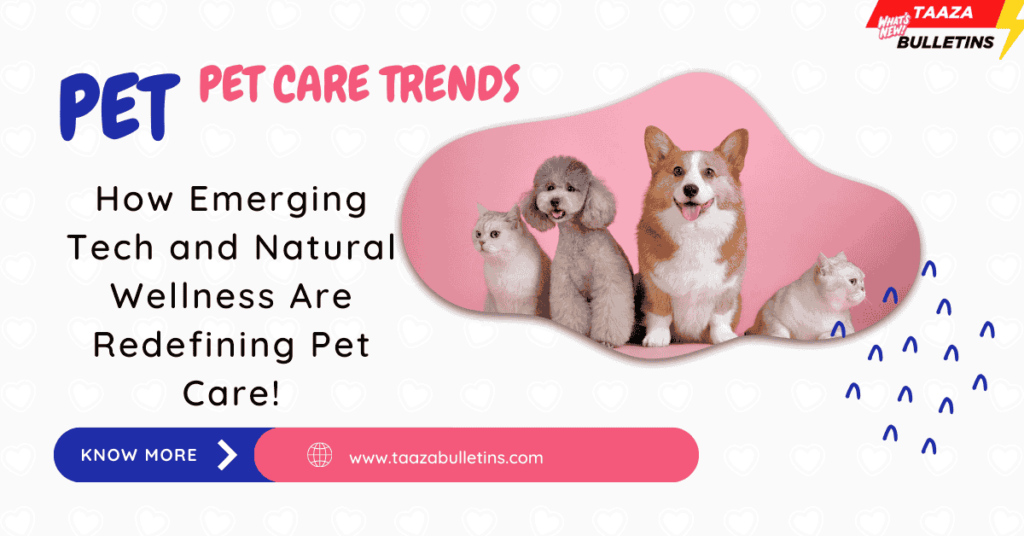How Emerging Tech and Natural Wellness Are Redefining Pet Care!
Table of Contents
Pet Care Trends – By 2025, pet care is set to undergo a revolutionary shift. As pets become integral family members, owners are embracing artificial intelligence (AI) for precision care and holistic health for natural wellness. This blog dives into the top trends shaping the future of pet ownership, backed by data and actionable tips to keep your furry friend thriving.

For numerous individuals, pets transcend the role of mere animals; they are integral members of the family. The growing significance of pets in the lives of their owners is anticipated to foster consistent expansion in the pet industry for the foreseeable future, as indicated by Morgan Stanley Research.
“American pet ownership saw a significant increase during the pandemic, with many individuals welcoming new furry, feathered, or finned family members amid COVID,” states Simeon Gutman, Retail Analyst at Morgan Stanley. “Although the proportion of households acquiring pets has slightly declined from its peak in 2020, the rise in new households likely to invest more in pet care, along with heightened expenditures in areas such as veterinary services, is expected to offset the decrease in ownership.”
The growth in spending within the pet sector may reach 7% annually by 2030, following a projected below-average growth of 2.5% in 2024 and 3.9% in 2025. “This figure is marginally lower than the previous Morgan Stanley survey of pet owners conducted in 2022, yet it still surpasses nearly all retail subsegments and represents one of the highest rates of return in any retail sector,” Gutman remarks.
According to the most recent survey findings, annual household expenditure on pets is forecasted to reach $1,445 per animal by 2026 and $1,733 by 2030. This equates to a 113% increase in total industry spending, amounting to $261 billion by 2030, compared to $122 billion in 2019.
Pet Care Trends – A Pet’s Best Friend
Generational changes are set to play a significant role in market expansion, as 34% of survey participants—particularly those aged 18 to 34—expressed their intention to acquire a pet, an increase from 28% in 2022. This demographic tends to allocate more funds towards their pets compared to older age groups, particularly in the areas of premium food and services, often prioritizing their pets’ preferences over cost considerations.
In terms of expenditure categories, pet services, particularly in animal health, are projected to be the primary catalyst for growth, with expectations of increasing from $48 billion in 2019 to $112 billion by 2030, thereby surpassing the growth rate of pet consumables, which is the largest spending category.
Specifically, veterinary services are anticipated to see a significant rise in demand over the next ten years. A survey conducted in March and April 2024 among 2,300 consumers revealed that 80% of pet owners had visited a veterinarian at least once in the preceding six months, with nearly two-thirds having made one to three visits, reflecting a four percentage point increase from the 2022 survey. Furthermore, respondents indicated that they often relied on veterinary recommendations when purchasing pet food and treats, which account for approximately 44% of total pet expenditures, amounting to $147 billion in 2023.
According to Gutman, “Considering our survey findings, it can be inferred that veterinarians directly influenced up to $12 billion of that expenditure and an additional $26 billion indirectly on pet care beyond what pet owners allocated for animal health.”
However, it is noteworthy that a smaller proportion of respondents indicated reliance on veterinary referrals compared to the previous survey, as younger individuals increasingly seek information through social media and personal networks.

Additionally, the emergence of independent animal health companies has fostered innovation, potentially contributing an additional 3% to market growth in areas such as monoclonal antibodies, vaccines, and other injectable treatments. Improved diagnostic capabilities, artificial intelligence, and expanded point-of-care services are expected to enhance the utilization of a broader array of products and services within the animal health sector, thereby elevating the standard of care.
1. AI-Driven Pet Care: Smarter, Faster, Personalized
AI is transforming how we monitor, diagnose, and care for pets. Here’s how:
a. Smart Collars & Wearables
- Real-Time Health Tracking: Devices like FitBark and Whistle monitor heart rate, activity levels, and sleep patterns.
- Fact: The global pet wearable market will hit $4.6 billion by 2025 (Grand View Research, 2023).
- Early Disease Detection: AI algorithms analyze data to flag issues like arthritis or diabetes before symptoms appear.
b. Virtual Vet Consultations
- Platforms like PetDesk and AirVet use AI chatbots to triage symptoms and connect owners to vets via video.
- Fact: 62% of pet owners prefer telehealth for minor concerns (AVMA, 2023).
c. Personalized Nutrition Plans
- Apps like NomNomNow leverage AI to create custom meal plans based on breed, age, and health history.
- Fact: 45% of pet owners now prioritize “human-grade” or tailored diets (Packaged Facts, 2024).
2. Holistic Health: Back to Nature
Holistic pet care focuses on mental, physical, and emotional wellness through natural solutions:
a. CBD and Adaptogens
- CBD oils and hemp-based treats reduce anxiety and inflammation.
- Fact: The pet CBD market will grow by 34% annually through 2025 (Nielsen, 2023).
- Adaptogens like ashwagandha are gaining traction for stress relief.
b. Functional Treats
- Treats infused with probiotics, turmeric, and omega-3s support gut health and immunity.
- Brands like Zesty Paws and The Honest Kitchen lead this trend.
c. Acupuncture and Reiki
- Alternative therapies are rising for chronic pain and anxiety.
- Fact: 28% of vets now offer acupuncture (American Holistic Veterinary Medical Association, 2024).
3. Merging AI & Holistic Care: The Best of Both Worlds
Forward-thinking brands are blending tech and natural wellness:
a. AI-Powered Holistic Platforms
- Apps like PetPace combine wearable data with holistic advice (e.g., suggesting calming herbs if stress is detected).
b. Smart Feeding Systems
- Devices like SureFeed dispense food based on dietary needs while integrating supplements like fish oil or CBD.
c. Mental Health Tech
- AI-driven toys like Companion Labs’ Mousr mimic prey movements to stimulate cats, reducing boredom and anxiety.
4. How to Adapt These Trends in 2025
- For Tech Newbies: Start with a basic activity tracker (e.g., Tractive GPS).
- For Holistic Beginners: Introduce a single supplement (e.g., CBD oil) and monitor effects.
- Budget Tip: Use apps like PetCoach for free AI-driven advice before investing in wearables.
5. Ethical Considerations
- Data Privacy: Ensure AI devices comply with GDPR or CCPA standards.
- Greenwashing Alert: Verify “sustainable” claims with certifications like USDA Organic or Leaping Bunny.
- The 2025 pet care landscape is all about synergy: AI delivers precision, while holistic practices nurture overall wellness. By embracing tools like smart collars and CBD supplements, you’re not just keeping up with trends—you’re future-proofing your pet’s health.
FAQs
Q1: Is AI pet tech worth the cost?
A: Yes for chronic conditions—early detection cuts long-term vet bills (e.g., diabetes management).
Q2: Are CBD products safe for pets?
A: Yes, but choose THC-free options and consult your vet for dosing.
Q3: How do I balance tech and natural care?
A: Use AI for diagnostics and holistic methods for daily wellness (e.g., diet + wearables).
References
- Grand View Research. (2023). Pet Wearables Market Analysis.
- American Veterinary Medical Association (AVMA). (2023). Telehealth Adoption Report.
- Nielsen. (2023). Pet CBD Growth Projections.
- Packaged Facts. (2024). Pet Food Trends Survey.
